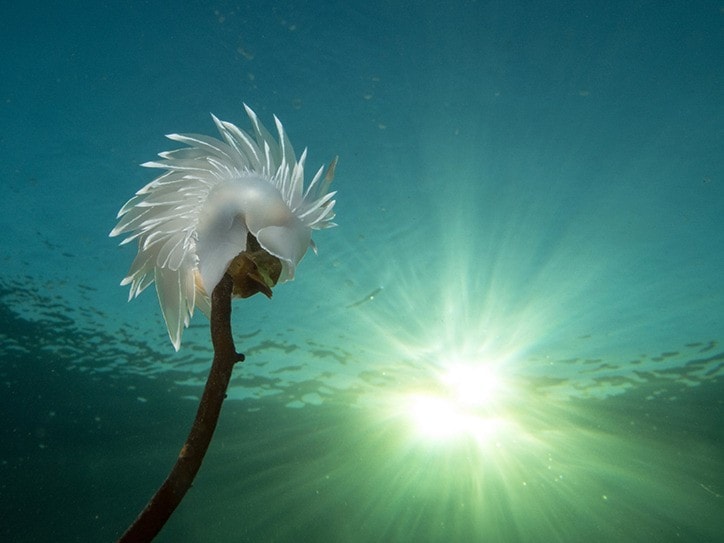The few places on earth untouched by human intrusion are so hopelessly remote and inaccessible that only occasional visitors — researchers and the most hard-core enthusiasts — dare venture to them. But there are a number of “border” regions where the encroachment of pavement and big-box stores give grudging way to flora and fauna that existed well before modern man arrived to exploit it.
The North Island is just such a place, and many of its residents recognize the value of the region goes beyond the trees that can be harvested, the minerals that can be dug, and the seafood that can be hauled from it.
These people dive headfirst into the North Island lifestyle, and that’s no metaphor when it comes to Jackie Hildering. You’ll find the Port McNeill-based biologist, educator and co-founder of the Marine Education Research Society featured on the back page of this week’s edition for her prize-winning photo in the 2014 Ocean Art contest.
We could recap her bio here, but that would get us to the bottom of this column before getting to the point of it.
For her prize-winning photo, Hildering has won a four-night diving trip to Indonesia. And we’ve won an excuse to share her achievements with our modest audience. Still not the point.
For Hildering, the benefit of having an awe-inspiring photograph of a rarely-seen creature published in a world-wide contest is not personal accolades or a prize. Her gratification comes from its potential to educate the public of the fragile nature of oceans that she rightly describes as “the life-sustaining force on the planet.”
This force is under assault, and only partly through wilful exploitation. Much of the attack comes in the form of apathy and ignorance of what is happening just metres below our collective view.
Hildering took her inspiring, sun-splashed photo while diving to document the perplexing and pervasive wasting syndrome killing populations of sea stars of the coasts of western North America.
“It’s really, really bad,” Hildering says of the sea star wasting syndrome. “Yet, it’s happening where this beautiful, ethereal-looking sea slug is right below the surface. Below that, though, is the garbage.”
We can see whales surface and breech, and ooh and ahh accordingly. And we can pull salmon for our weekend grilling party and appreciate the bounty. But because the vast majority of marine life exists in the dark, out of our sight, we don’t see the potential extinctions and loss of biodiversity — upon which we all depend — the way we do with land-based species.
Hildering’s strength has been sharing that message in a non-confrontational way — “I want to break apart that dichotomy of resource-user vs. conservationist,” she says. “Everybody needs the environment, and greater environmental awareness and preservation can only benefit all of us.”
Hildering, who considers herself first and foremost an educator, says what we need to preserve our own life-sustaining environment is “humility, connection, inspiration and positive action.”
And that is the point.
